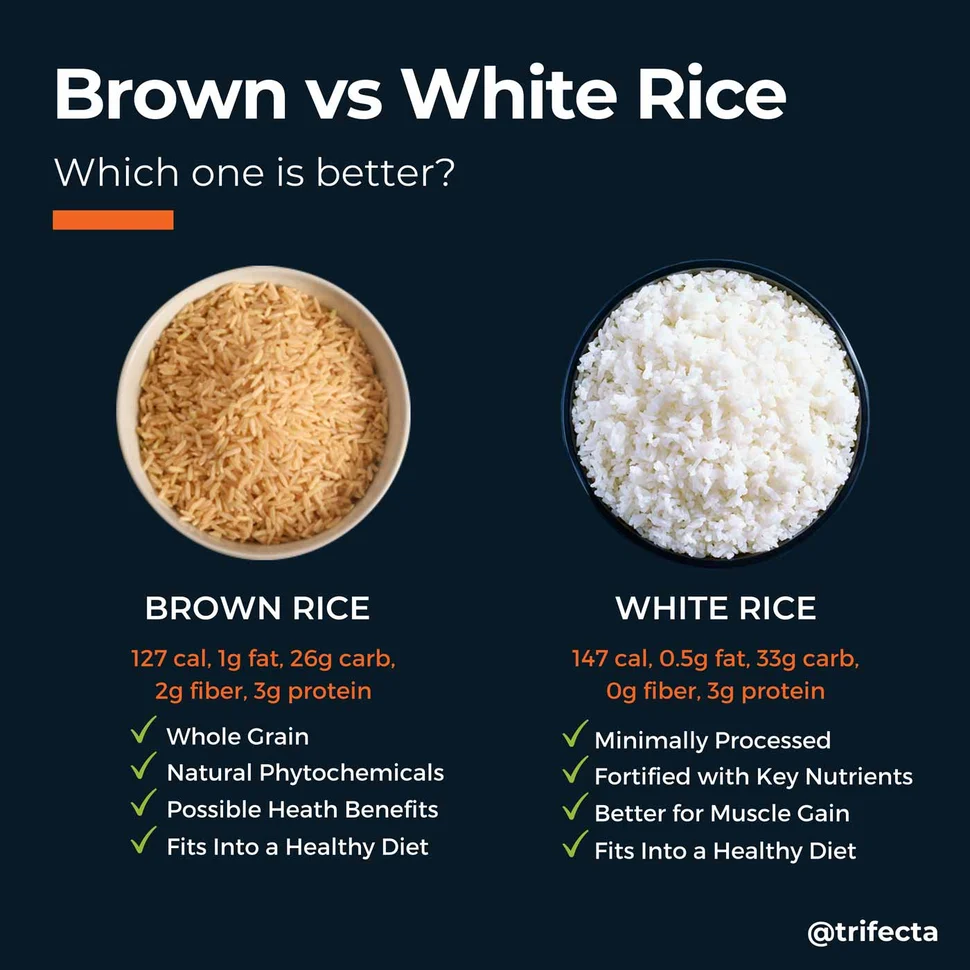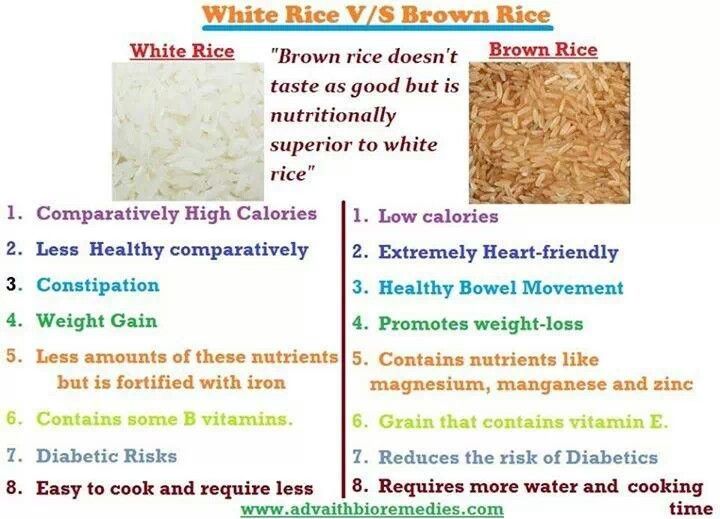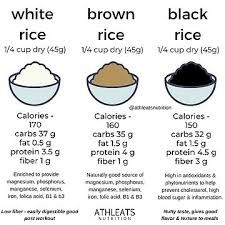Brown Rice vs White Rice-24
Brown Rice vs White Rice
There are two widely used types of rice, brown and white, that have different nutritional characteristics.In this article we will try to compare Brown Rice vs White Rice which is better for health.
Whole grains like brown rice have more fibre, vitamins, and minerals since they still have their bran and germ layers. This includes B vitamins, magnesium, and phosphorus, offering a more nutrient-dense alternative. Brown rice has fibre, which may help with weight management and improve blood sugar regulation.

White rice, on the other hand, goes through processing that mostly leaves the starchy endosperm after the bran and germ layers are removed. It lacks the fibre and several minerals found in brown rice, even though it is frequently enhanced with iron and some B vitamins. White rice is softer and has a gentler flavour.
The decision between brown and white rice is based on personal dietary choices and health objectives. For anyone looking for a more nutrient-dense option—such as those with high blood pressure or those trying to lose weight—brown rice is frequently advised.
Follow Our Digiknowledge.co.in Page for Latest update about Bikes, Cars, Sports, , Life style and many more.
But because it cooks more quickly and is more versatile than other rice, white rice is still a mainstay for many people. When choosing between brown and white rice, it’s important to weigh personal preferences against nutritional benefits.
The Benefits of Consuming Brown Rice:
Packed with Nutrients: Brown rice is a more nutrient-dense option because it’s a fantastic source of fibre, vitamins, and minerals.
Stable Blood Sugar: Brown rice’s high fibre content may help with blood sugar regulation.
Brown Rice with High Blood Pressure:
Managing high blood pressure is largely dependent on food. High blood pressure is a common health condition. Because of its rich nutrient profile, brown rice may be advantageous for people with high blood pressure.

Better blood pressure control may be facilitated by brown rice’s high fibre content. Fibre can help control blood pressure because it increases feelings of fullness and lowers blood sugar.
It also helps manage weight, which is another factor that is related to blood pressure.
Brown rice contains the minerals magnesium and potassium, which are linked to blood pressure management. Magnesium aids in the relaxation of blood arteries, whereas potassium helps maintain salt balance.

Brown Rice’s Benefits for Losing Weight:
Because of its high fibre content, brown rice can help in weight loss. Fibre makes you feel fuller for longer, which makes you eat less overall. Furthermore, brown rice’s complex carbs offer a continuous flow of energy, which helps to control blood sugar levels and curb overindulgence.
A well-balanced diet that prioritizes whole foods and includes brown rice can help control high blood pressure.
The disadvantages of eating brown rice
A compound found in brown rice that has the ability to bind to minerals and decrease their absorption. Brown rice can be made more bearable by soaking or fermenting it.
Digestibility: Because brown rice contains more fibre than other rice varieties, some people may find it more difficult to digest.
Conclusion: Depending on personal tastes and dietary objectives, brown or white rice can both be a component of a healthy diet. Brown rice can be a better choice if you prioritise it having more fibre and more nutrients. All in all, nevertheless, it’s critical to keep a balanced diet.
Can You Eat Rice with High Blood Pressure?
For those with high blood pressure, rice is acceptable in their diet. Nonetheless, it’s advised to choose whole grains like brown rice and to watch portion sizes. For blood pressure management to be effective, a diet high in fruits, vegetables, lean proteins, and whole grains and low in processed foods, saturated fats, and sodium must be followed.
Can You Eat White Rice If You Have Diabetes?
To keep blood sugar levels under control, diabetics must limit their carbohydrate intake. Even though white rice has a high carb content, it may still be a part of a diabetic diet if you watch your portion sizes and pair it with other foods that are high in nutrients.
Can Reheating Rice Cause Food Poisoning?
It is possible to get food poisoning from heating rice incorrectly. Bacillus cereus spores, which can withstand cooking, have been known to be found in raw rice. Once cooked, these spores can proliferate and produce poisons that are not eliminated by reheating rice if it is kept at room temperature.
Can You Eat Brown Rice at Night?
You can have brown rice at night, yes. Maintaining a balanced diet and controlling portion quantities are crucial. It is acceptable to consume a small amount of brown rice as part of a dinner that is well-balanced.
What Happens if You Eat Brown Rice Every Day?
Because it contains important nutrients, brown rice can be a regular part of a healthy diet. But moderation is key, just like with any food. Although eating a lot of brown rice without varying your diet can provide nutritious benefits, it can also cause an imbalance in the amount of nutrients you take in.
Which is easier to digest brown rise or white rise?
Due to its decreased fibre content, white rice is easier to digest than brown rice. Additionally, white rice generates a greater surge in blood sugar than brown rice due to its higher glycemic index.
Which is healthier white rice or brown rice?
As part of a balanced diet, both brown and white rice can offer health benefits. Blood glucose levels and metabolic health may be enhanced by brown rice. Those with sensitive stomachs and digestive problems can benefit more from white rice.




